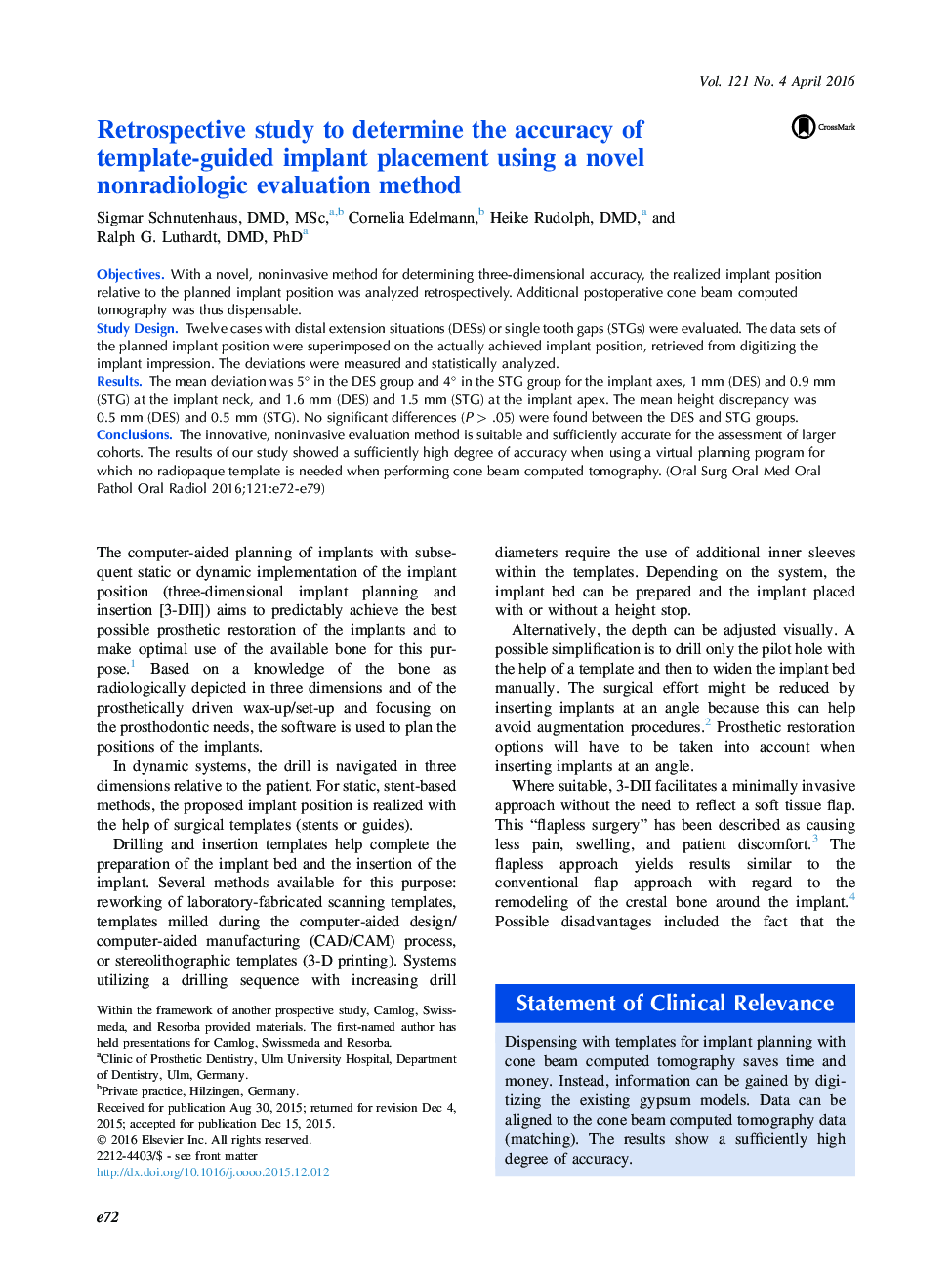| Article ID | Journal | Published Year | Pages | File Type |
|---|---|---|---|---|
| 3166616 | Oral Surgery, Oral Medicine, Oral Pathology and Oral Radiology | 2016 | 8 Pages |
ObjectivesWith a novel, noninvasive method for determining three-dimensional accuracy, the realized implant position relative to the planned implant position was analyzed retrospectively. Additional postoperative cone beam computed tomography was thus dispensable.Study DesignTwelve cases with distal extension situations (DESs) or single tooth gaps (STGs) were evaluated. The data sets of the planned implant position were superimposed on the actually achieved implant position, retrieved from digitizing the implant impression. The deviations were measured and statistically analyzed.ResultsThe mean deviation was 5° in the DES group and 4° in the STG group for the implant axes, 1 mm (DES) and 0.9 mm (STG) at the implant neck, and 1.6 mm (DES) and 1.5 mm (STG) at the implant apex. The mean height discrepancy was 0.5 mm (DES) and 0.5 mm (STG). No significant differences (P > .05) were found between the DES and STG groups.ConclusionsThe innovative, noninvasive evaluation method is suitable and sufficiently accurate for the assessment of larger cohorts. The results of our study showed a sufficiently high degree of accuracy when using a virtual planning program for which no radiopaque template is needed when performing cone beam computed tomography.
